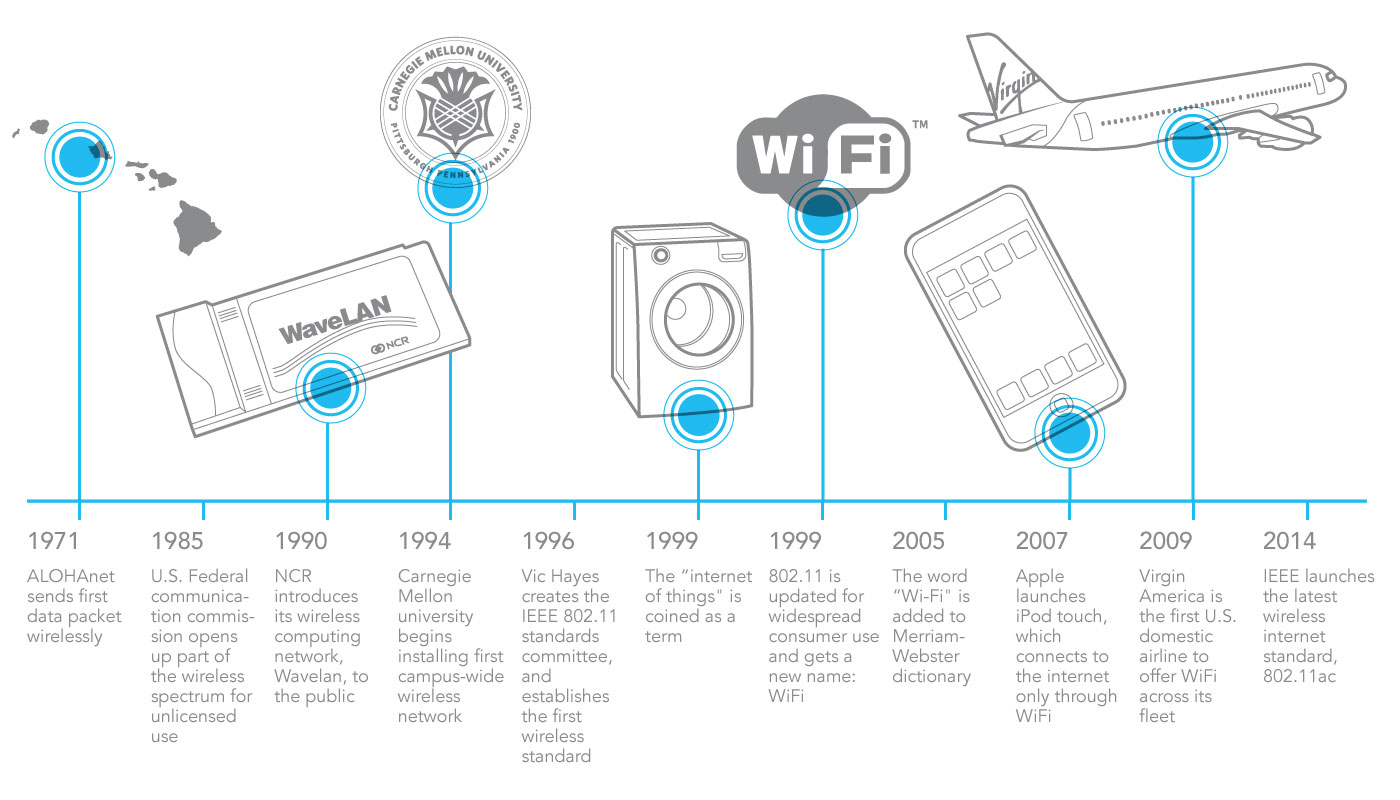Learn how wireless internet became the standard in under 50 years.
What’s the best thin-crust pizza in town? How do you tell the difference between a mosquito bite and a bedbug bite? Is zero divided by zero still zero? When in doubt, take it to the internet.
Given the ubiquity of internet access — particularly wireless internet — it’s easy to take this constant connection for granted. Whether its presence is mundane (your weekly commute) or mission-critical (NASA’s WiFi on the moon), the expansion of wireless technology opens opportunities for us to work and play smarter, faster, and better.
But of course, it wasn’t always so easy. Just ten years ago, accessing the web required a dial-up modem — and enduring two to 10 minutes of this sound. So, how did we get to where we are today, with wireless internet almost everywhere we turn?
It started with “hello”
Well, actually, it started with aloha — ALOHANET to be exact.
In 1971, the University of Hawaii completed the first wireless data packet transfer ever attempted without a satellite or connected cables. The team, led by engineer and computer scientist Norman Abramson, used a new technology called Ultra High Frequency radio waves (UHF) to successfully connect seven computers, spread across different Hawaiian islands.
At the time of ALOHANET, the government regulated nearly all telecommunications. But in 1985, the Federal Communications Commission made an unprecedented move: They opened up three bands for unlicensed use — meaning any organization or entrepreneur could communicate over them. Companies like IBM, NCR, and AT&T soon began developing their own wireless local area networks, creating technologies that became the precursor to the WiFi we know — and usually love — today.
WiFi party like it’s 1999
The real shift happened in the late 1990s, when Vic Hayes — known to many as the “father of WiFi” — introduced the concept of an international standard for wireless networking, known as the IEEE 802.11 standard.
In 1999, Hayes and his team at the Institute of Electrical and Electronics Engineers (IEEE) updated the standard for WiFi to 802.11b. This essentially expanded the technology outside of the halls of academic institutions and into the homes of everyday consumers. Of course, IEEE 802.11b was quite a mouthful for the everyday internet user, so the committee brought in a branding firm to rename the technology. “WiFi” was the ultimate winner over suggestions like “Trapeze,” “Hornet,” and “Dragonfly.” The same year, the WiFi Alliance was established to ensure WiFi kept the same set of standards across the globe.
We’ve got a need, a need for speed
Between 2000 and 2005, more than 100 million internet connected devices were sold each year — this marked a big shift in consumers’ reliance on WiFi in their day-to-day lives. In 2014, the 802.11 standard was updated to 802.11ac, which provided better wireless speed and coverage to help support changing WiFi needs. Mesh networking technology is one of the latest developments in home WiFi. It was was originally created to allow troops to communicate on the battlefield via radio without towers, and is commonly used on college campuses and in office buildings. eero is the first company to bring this technology to the home.
Thanks to WiFi, we no longer need the umbilical-like tethers of cables or multiple ethernet cords to stay connected. Products like Apple TV, Roku, Amazon Fire, and Chromecast have started to replace cable boxes all over the world, and services like Netflix, Hulu, Spotify, and HBO Go allow us to consume entertainment wherever and whenever we want. Plus, everything from our home thermostats to our security systems rely on WiFi. At eero, we’re continuing to build the future of WiFi — and laying the foundation for the modern home.



You must be logged in to post a comment.